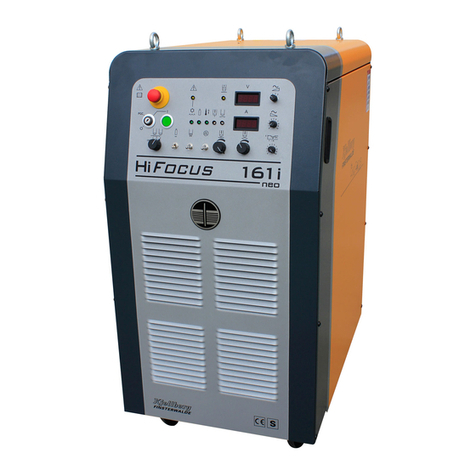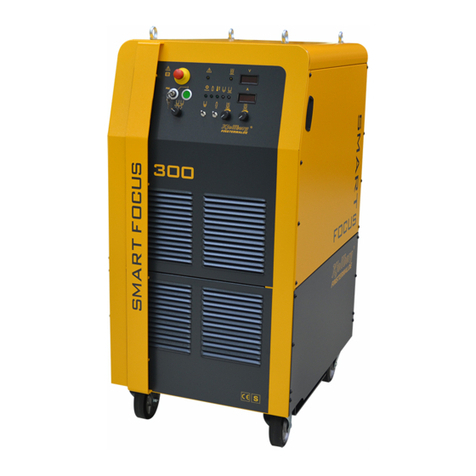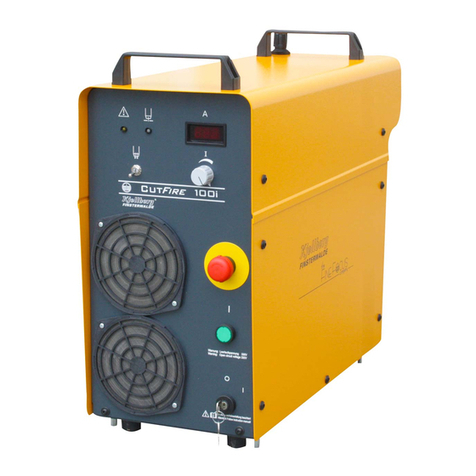036_102...108_BA_engl.doc 10.04.2003 Kjellberg Finsterwalde
- Seite 7 -
Working in environments with increased hazard of electric shock
The Plasma Cutting Machine is built in compliance with valid standards (EN 60974-1, BGV D1) and
therefore applicable in environments with increased hazard of electric shock:
• The plasma power source and the plasma torch are forming a safety-proofed installation, which
can be separated only by a special tool
• If the cover plate isn´t properly closed the power source can´t be switched ON
• The plasma hand torch can be operated only, if the insulating protective cap, which prevents
against touching the life nozzle cap, is properly fitted. (safety circuit)
Therefore the plasma cutting unit is S-marked and applicable in environments with increased hazard
of electric shock.
Attention!
Always follow valid instructions and local safety rules (BGV D1 and EN 60974-1)!
Endangerments through high-voltage ignition
For igniting the pilot arc a High Voltage Igniter is installed in the power source. When pressing the
ON-button (remote control or CNC-signal) the high voltage is applied to the cathode. After initiating
the pilot arc the HV-supply becomes switched off automatically. After the cutting process has started
the pilot extinguishes.
Attention! Never touch the nozzle if the power source is switched ON!
Therefore the nozzle cap of the plasma hand torch is shielded by the protective cap to prevent
touching.
The HV-ignition may establish electric or electro-magnetic fields, which can cause interference to
heart pace-makers and
other electronic devices
in proximity of plasma installations.
Endangerment through electromagnetic interferences
The plasma cutting installation complies with the instructions of the EN 50199 (VDE 0544, part 206)
“Electromagnetic Compatibiliy (EMC), product standard for Arc Welding Equipment”. This standard is
valid for Arc Welding Installations and related processes (e.g. plasma cutting), which are designed for
the use in industrial and private areas.
Warning!
It may be necessary to provide special measures if plasma cutting machines are used
in private areas (screened power cables, etc.)
The user is responsible for installing and using the installation according to the manufacturer´s
instruction. If electromagnetic disturbances are detected then the user is responsible to arrange the
technical solution with the assistance of the manufacturer.
Recommendations for assessment of the area (EN 50199)
Before installing the equipment the user shall make an assessment of potential electromagnetic
problems in the surrounding area, and shall take the following into account:
• Other supply cables, control cables, signalling and telephone cabels below and adjacent to the
installation
• Radio and television transmitters and receivers
• Computer and other control equipment
• Safety devices, e.g. protections for industrial equipment
• Health of the people around, wearing pacemakers or hearing aids
• Equipment for calibration and measuring
• Immunity of other equipment in the environment. The user shall ensure that other equipment
being used in the environment is compatible. This may require additional protection measures.
• Time of day that cutting has to be carried out































